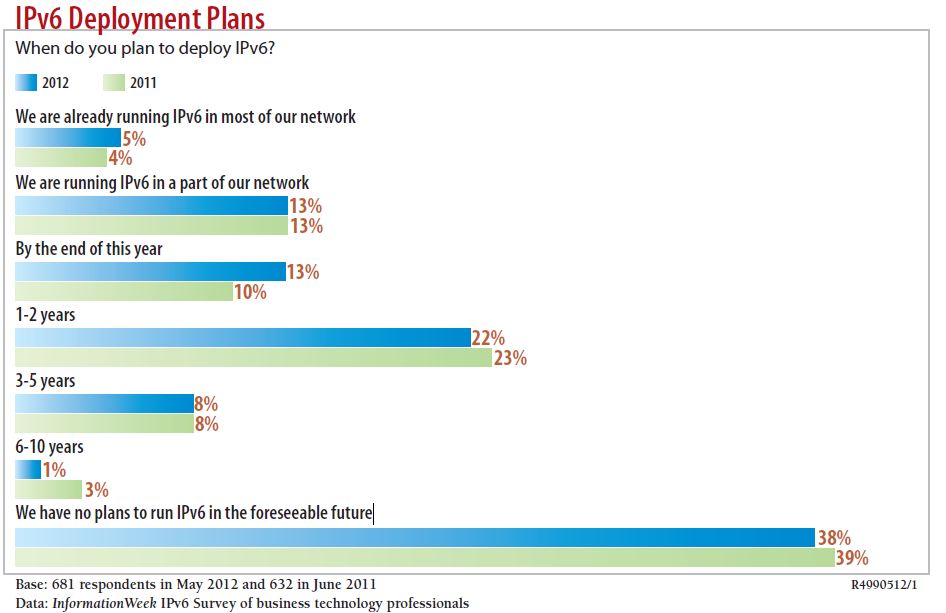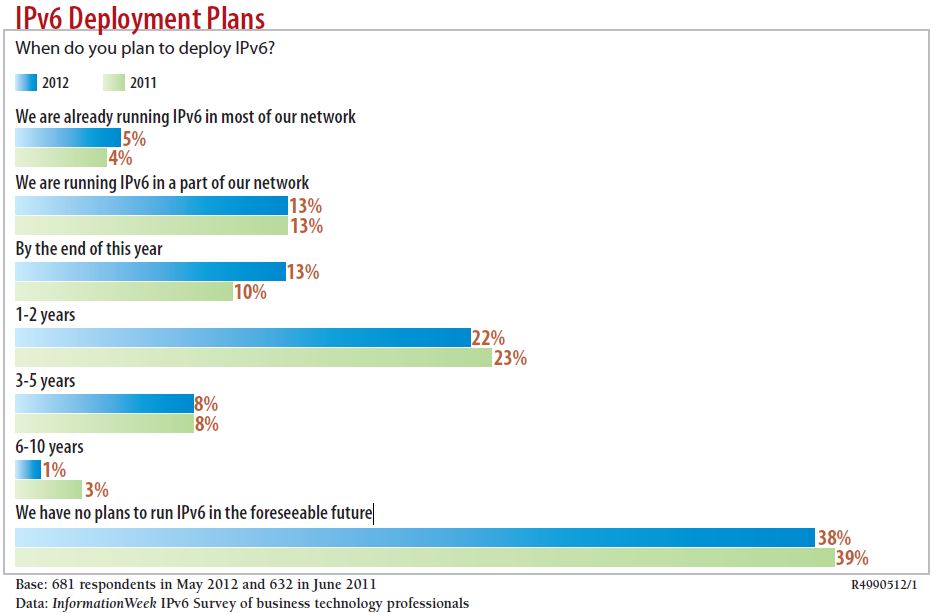On June 6, World IPv6 Day participants, including Akamai, AT&T, Facebook and Google, turned IPv6 support on and left it on. However, a poll conducted by Information Week in May revealed that 38% of poll respondents have no plans to run IPv6 in the foreseeable future. This data provoked Information Week’s writer Andrew Lientz to publish a report outlining some important steps to help you get started with IPv6. The full report is available for download on Information Week’s website, but here are some key points.

Start asking yourself some questions to help establish priorities
Do you need to get IPv6 to the desktop and internal systems? What about telecommuting and mobile employees? Do you have insight into what service providers are doing? And what about security?
Prioritize IPv6 support for externally facing systems
This includes websites, streaming services and firewalls. The users of these services will start becoming IPv6-compliant immediately.
All of your websites and Internet-facing applications must also answer on IPv6
If a user has only an IPv6 address, that traffic will need a place to go. Ideally, you should make your entire network both IPv4- and IPv6-capable.
Allocate time and money to get your staff some on-site training
Look for a hands-on course where the trainer covers the tasks that will be involved in your IPv6 upgrade initiatives, using your systems. It’s important to also give your staffers the right tools so they can test IPv6 before you begin any broader initiatives.
Make sure a firewall is in place when you bring IPv6 up on the network
There is a general believe that Network Address Translation (NAT) provides some measure of protection from attack. Although that may be true in some cases, NAT is not a security strategy.
Ensure that your VPN software and gateway are compliant
If an employee is assigned an IPv6 address and the service provider is performing a V6-to-V4 translation, you may see significant performance degradation. The setup may even break some VPN software, putting data at risk for compromise.
To read more about IPv6, read our previous post “Six Benefits of IPv6”.











